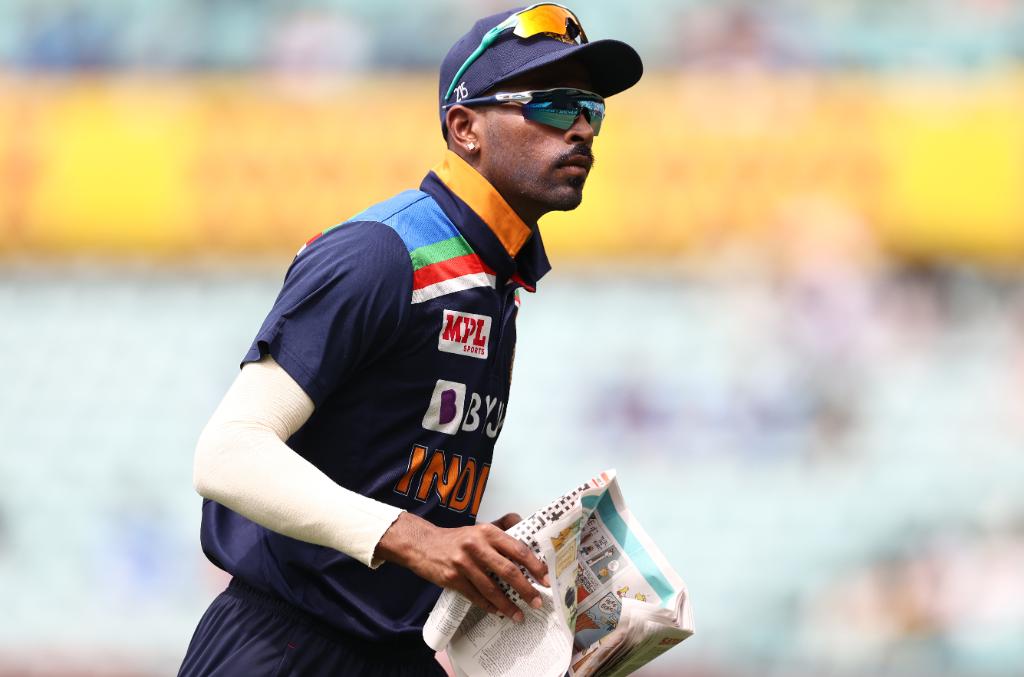Matured Hardik Pandya’s ‘seasoned’ batting spells positive signs for Indian future
'Oh what has he done, Pandya has been utterly suckered into that shot from Mitchell Santner, this is looking like the end of India,' read the commentary in the aftermath of Hardik Pandya's wicket in the semi-final against New Zealand.

An eerie flashback of one of India’s worst days in the competition - India had found themselves in the worst of situations at 5/3 in the fourth over of the innings, which later worsened to 24/4. There was no way out for India on a gloomy and dark day in Manchester, all their hopes were dashed on the spot of a possible match-up with England or Australia in the final.
But the flag-bearer of the remaining dwindling light was at the crease, Hardik Himanshu Pandya, who then had MS Dhoni join him in the run-chase. 81 minutes after walking in a pressure situation, India had breathed a sigh of relief not because they were close to the total but because they believed. In a matter of minutes, Pandya put off the dwindling light with the most ‘immature’ of shots - holing to the deep after battling against the red-hot Kiwi pace attack.
That’s the impression Pandya gave as a pure batsman in 2019, which really raised a lot of doubts over his batting qualities. He always had the talent to battle it out but couldn’t put on a substantial score to save India’s shambles. In 2020, one of his most revered abilities, bowling, was taken away from him, which raised questions over his place ahead of Manish Pandey, who was viewed as the best possible option.
Pandya was on the back of another IPL win, his average stood somewhere in the 32 mark but his strike-rate was immaculate. His bowling though never appeared and was nowhere to be seen in Mumbai Indians’ fifth IPL win, which only gave him and the management one option - to play as a batsman. Could he do it against Australia where the ploy was going to be to attack him from the first ball? That was the question that popped ahead of the first ODI.
4/101 - India were chasing 375 and with only Ravindra Jadeja in the batting order, they had to play it safe and yet at the same time be smart. Australia had their plans set against him - the short balls were immaculate and seemed to cause a few troubles early on to Pandya but he weathered the storm, made it looks like he finally knew how to let it ‘go.’ 'Is he the best that India got?' was the question and by the end of his knock, the answer became a well-known one in the country. When he smacked Pat Cummins to the fence, we saw a different Pandya, one that knew to take the measured risk. His record against leg-spin is well documented, with a dream-like strike-rate, but he went about quietly dislodging Adam Zampa with his batting arsenal.
Against Maxwell, it was no different, this was the 2020 version of Pandya, an improved version who knew to pace his innings - knew where the boundaries were and knew in equal importance the value of singles and doubles. He ran and ran hard between the wickets and also scored the boundaries in between. As the run-rate resembled the New York sky-scrapers, the right-hander teed off and in between losing ropes of crashing to a mighty defeat and India nearly getting there, he stood out in the testing times from the rest.
India lost the match by 66 runs but the game will always be remembered as the first of many for the right-hander, who scored a 90, which stood as his highest score in the ODI format. In the second ODI, he walked out rather late when the game was almost done and dusted but his bowling caught most of the attention, which made the Indian fans happy.
In the third ODI, at 4/123, Pandya walked in like a ‘giant’ with Virat Kohli shouldering much of the responsibility. Once Kohli walked off, it left India with their two all-rounders - Pandya and Jadeja with 18 overs still left in the innings. India were 152/5, the game was Australia’s to lose but these two all-rounders had a bigger point to prove and Pandya in specific had to show that he could feature just as a batsman. The series might have been done and dusted but the criticism still continued - people still wanted Pandey in the setup.
Three years before, in a similar position, the then 24-year-old all-rounder walked out when India was in a spot of bother at 5/87, the result was a 66-ball 83, with five boundaries and five sixes that bailed India out of trouble - eventually helping them win the game against Australia, hailed as one of his best innings. But the third ODI was a step further - India had already lost two games in a row, their morale was low but Pandya’s form was by far his best with the bat in the Indian colours. The drill was pretty simple - single, double, boundary and a six, in between a few leaves and a few ducks; that was enough to elevate his batting status.
He walked back scoring 76-ball 92, weathered storms right from the first game, dropped his body when the short-ball came his way and absolutely tonked the deliveries which were in his sight. A new age knock from a new-age cricketer but more importantly dressed in a tip and tidy form of a classical batsman from India’s 2000s, Pandya’s new look cricket left everyone impressed and gave a big positive sign for India’s limited-overs future. His mid-season interview epitomised every bit of his maturity - admitting that the plan was to take it till the 50th over. In short, to play it till the end, something that he has not done too much in the past!

Comments
Sign up or log in to your account to leave comments and reactions
0 Comments